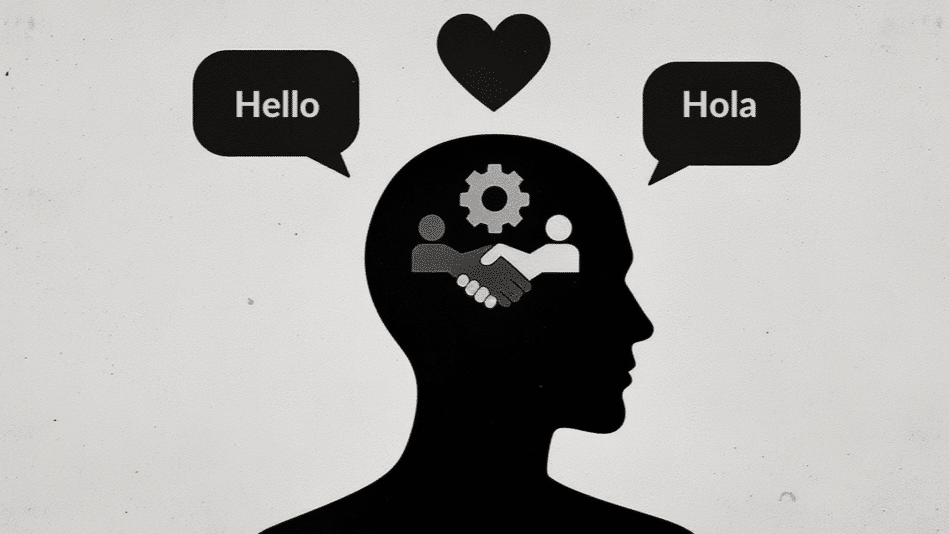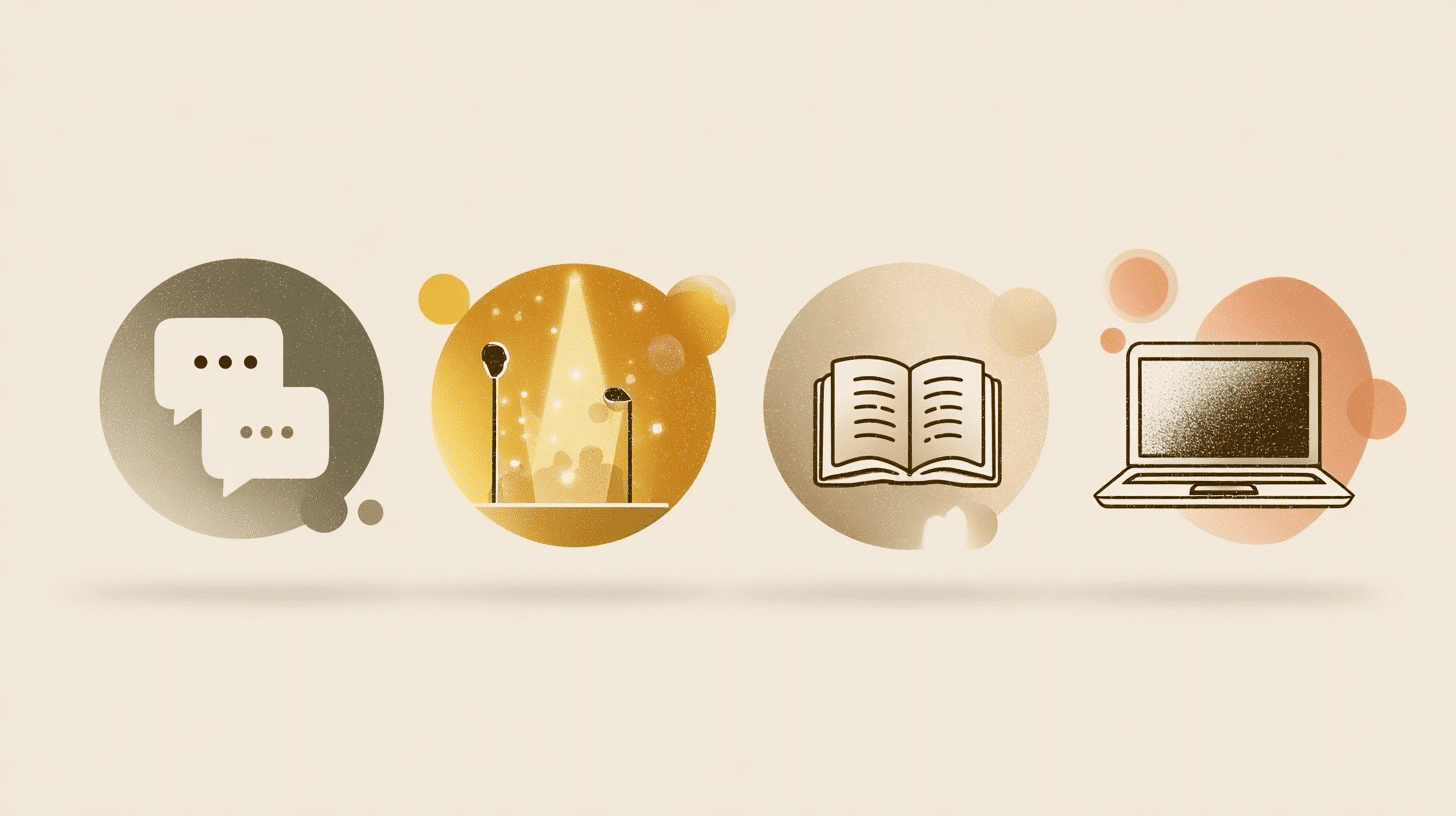Have you noticed how your voice shifts when speaking different languages, or how certain words in your native tongue hold emotions no translation can capture?
Language is more than communication. It is the thread that interwines cultural identity into our very being.
For me, the stories my grandmother told, the jokes only understood in my mother tongue, and the way emotions flow differently in different languages all shape my sense of belonging.
Language does not just describe the world; it creates it.
In this blog, I’ll show you how cultural identity, formed through language, shapes thought, improves experiences, and why preserving linguistic diversity matters more than ever.
What Is Cultural Identity and Why Language Matters
Understanding cultural identity means examining the invisible forces that shape you, making you who you are. It’s like having a personal recipe that incorporates your values, beliefs, and unique perspective on the world.
Language is the main ingredient that brings this recipe to life.
Cultural identity refers to how we see ourselves within our cultural groups. It includes our traditions, customs, and shared experiences.
Language plays three key roles in shaping cultural identity:
- Expression Tool: It gives voice to our thoughts and feelings in ways that feel natural and genuine
- Memory Keeper: It stores cultural wisdom, stories, and traditions passed down through generations
- Community Builder: It connects us with others who share similar backgrounds and experiences
How Language Shapes Who We Are?

The words we speak don’t just communicate – they actively shape our thoughts and personality. Language functions like a mental filter, influencing how we perceive the world around us.
Consider how different languages organize reality. Spanish speakers use “ser” and “estar” to express different types of “being,” whereas English has just one word.
This shapes how they think about permanent versus temporary states.
1. Mental Processing: Grammar structures influence logical thinking patterns and the organization of memory.
2. Emotional Depth: Native languages carry deeper feelings – anger feels different in your mother tongue than in a second language.
3. Social Connections: Language rules for respect and hierarchy guide how you interact with others in different cultural settings.
When you switch languages, you’re not just changing words – you’re shifting entire ways of experiencing life.
The Role of Mother Tongue in Identity Formation
Your first language is like your cultural fingerprint – unique, permanent, and deeply personal.
The language you learned at home carries special power in shaping who you become. It’s the foundation upon which all other languages and cultural experiences build.
Even if you become fluent in other languages later, your first language remains the deepest part of your cultural core.
| Mother Tongue Impact | How It Works | Long-term Effects |
|---|---|---|
| Emotional Processing | First learned words carry the strongest feelings | Adults often return to their native language when upset |
| Cultural Values | Family teachings come through the native language | Core beliefs remain tied to the original language |
| Thought Patterns | Grammar structures influence thinking style | Problem-solving approaches stay consistent |
| Social Connection | Shared language creates instant bonds | Native speakers feel like “family” |
Bilingualism and Multiple Cultural Identities
Speaking multiple languages is like having several keys to different cultural rooms. Each language opens doors to new ways of thinking, feeling, and experiencing the world.
Bilingual people often describe feeling like they have multiple personalities – one for each language they speak.
This isn’t just imagination. Scientific research confirms that bilingual individuals actually shift their behavior and thought patterns when switching languages.
The Bilingual Advantage:
- Cognitive Flexibility – Switching between languages trains your brain to be more adaptable
- Cultural Sensitivity – Understanding multiple cultures creates more empathy
- Enhanced Creativity – Having more linguistic tools leads to more creative thinking
- Better Problem Solving – Multiple perspectives help find better solutions
Many bilingual individuals report feeling “more themselves” in one language than in another.
A Spanish-English speaker might feel more emotional and expressive in Spanish but more professional and logical in English. This isn’t code-switching – it’s identity shifting.
“You live a new life for every language you speak. If you know only one language, you live only once.” – Czech Proverb
Language Loss and Its Impact on Cultural Connection

Losing a language feels like losing part of your soul. When communities stop speaking their native tongues, cultural identity through language begins to fade.
UNESCO reports that one language disappears every two weeks, taking with it unique knowledge and perspectives.
| Stage | What Happens | Impact on Identity |
|---|---|---|
| Early Loss | Children prefer the dominant language over their heritage tongue | Weakened family communication bonds |
| Community Shift | Events switch to majority languages for broader appeal | Traditional stories stop being shared |
| Individual Impact | People feel caught between two cultures | Identity confusion and cultural shame |
| Recovery Options | Immersion schools and digital learning tools | Possible language revival with community effort |
The Irish language shows this pattern clearly. Only 70,000 people speak Irish daily after centuries of English dominance.
Preserving Cultural Identity in a Globalized World
Living in today’s connected world means striking a balance between your cultural roots and global citizenship.
The challenge isn’t choosing between your heritage and modern life – it’s finding ways to honor both. Smart preservation strategies help maintain cultural identity through language while accepting new opportunities.
For Individuals:
- Use heritage languages at home, even if children resist initially
- Connect with online communities that share your cultural background
- Consume media (movies, music, books) in your native language
- Teach cultural concepts that don’t translate to other languages
For Families:
- Create “language days” where only the heritage language is spoken
- Involve grandparents in regular conversations with grandchildren
- Plan trips to countries where your heritage language is spoken
- Join local cultural organizations and language groups
For Communities:
- Organize cultural festivals that highlight linguistic diversity
- Start heritage language classes for children and adults
- Create partnerships between schools and cultural organizations
- Document elder stories and wisdom in native languages
Wrapping It Up
Your language is your cultural DNA, carrying the essence of who you are and where you come from.
Cultural identity through language shapes how you think, connect, and pass traditions across generations.
While globalization poses a threat to smaller languages, technology and awareness also create new ways to preserve and celebrate them.
Choosing to protect your linguistic heritage is a personal decision, yet it strengthens entire communities. You don’t have to choose between honoring your roots and accepting new cultures; the richest identities often blend both.
What role does language play in your cultural identity? Share your thoughts and experiences below.





































